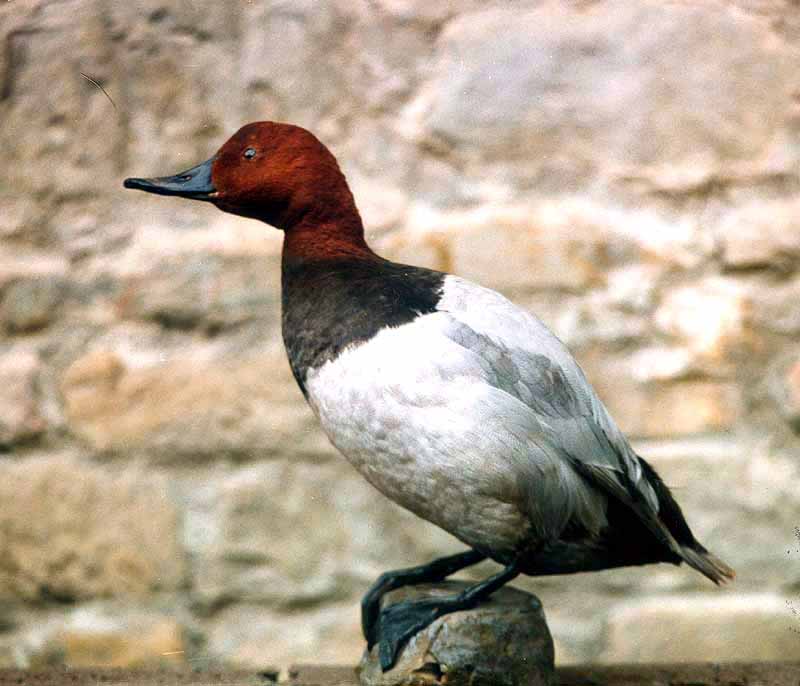
Common pochard(Aythya ferina)
Phylum —chordata
Class — aves
Order — anseriformes
Family — anatidae
Genus –aythya
Appearance
The adult male has a long dark bill with a grey band, a red head and neck, a black breast, red eyes and a grey back. The adult female has a brown head and body and a narrower grey bill-band. The triangular head shape is distinctive.
Length – 42-49 cm, wingspan – 72-82 cm, weight – 700-1100 g.
Habitat
Pochards breed in much of temperate and northern Europe and across the Palearctic. They are migratory, and spend winter in the south and west of Europe.
Behavior
These are gregarious birds, forming large flocks in winter, often mixed with other diving ducks such as the tufted duck, with which they are known to hybridize.
Diet
These birds eat aquatic plants with some mollusks, aquatic insects and small fish.
Pochard's have a behavioral preference when it comes to their feeding patterns. This behavioral preference is that pochards prefer shallower water in comparison to deeper water even though the food concentration in deeper water may be higher.
Reproduction
Common pochardsfly to nesting sites when spring is already in full swing. During mating games, the female swims with her beak lowered into the water, and several males gather around her, "nodding" their heads, bending it first back then forward. Their necks are sometimes swollen. Often the female flies over the water, and the males accompany her.
After making a pair, the female begins to build a nest. Usually the nest is located in a shelter on a blockage of reeds, in a dry place or in shallow water. There are 6 to 15 greenish-blue eggs in a clutch. After laying the last egg, the female begins to incubate. The male leaves its partner at this time and flies away to molt. During incubation, the color of the eggs changes and becomes dirty olive. Incubation lasts 26 to 28 days. The chicks must hatch at the same time, as the female will lead them away from the nest as soon as they are dry. On the second day, the chicks can dive and peck insects from the leaves of plants. The brood tries to stay close to the thickets, where they can hide themselves in case of danger.
Chicks grow quickly and can fly by two months. The grown-up chicks unite in flocks and begin to roam in search of food.
In captivity
In captivity, these birds can live up to 20 years, in nature, the life expectancy is much less.
These birds need a deep pool, but the best option is a reservoir (pond).
The diet of these birds should include various kinds of leaves, water lilies, wild celery, wild rice, millet. It should also containmollusks, snails, nymphs, earthworms and leeches. Protein-rich food is important for birds during the reproduction season. During feeding, adult females eat almost only organic food.
 Russian
Russian
 English
English
























